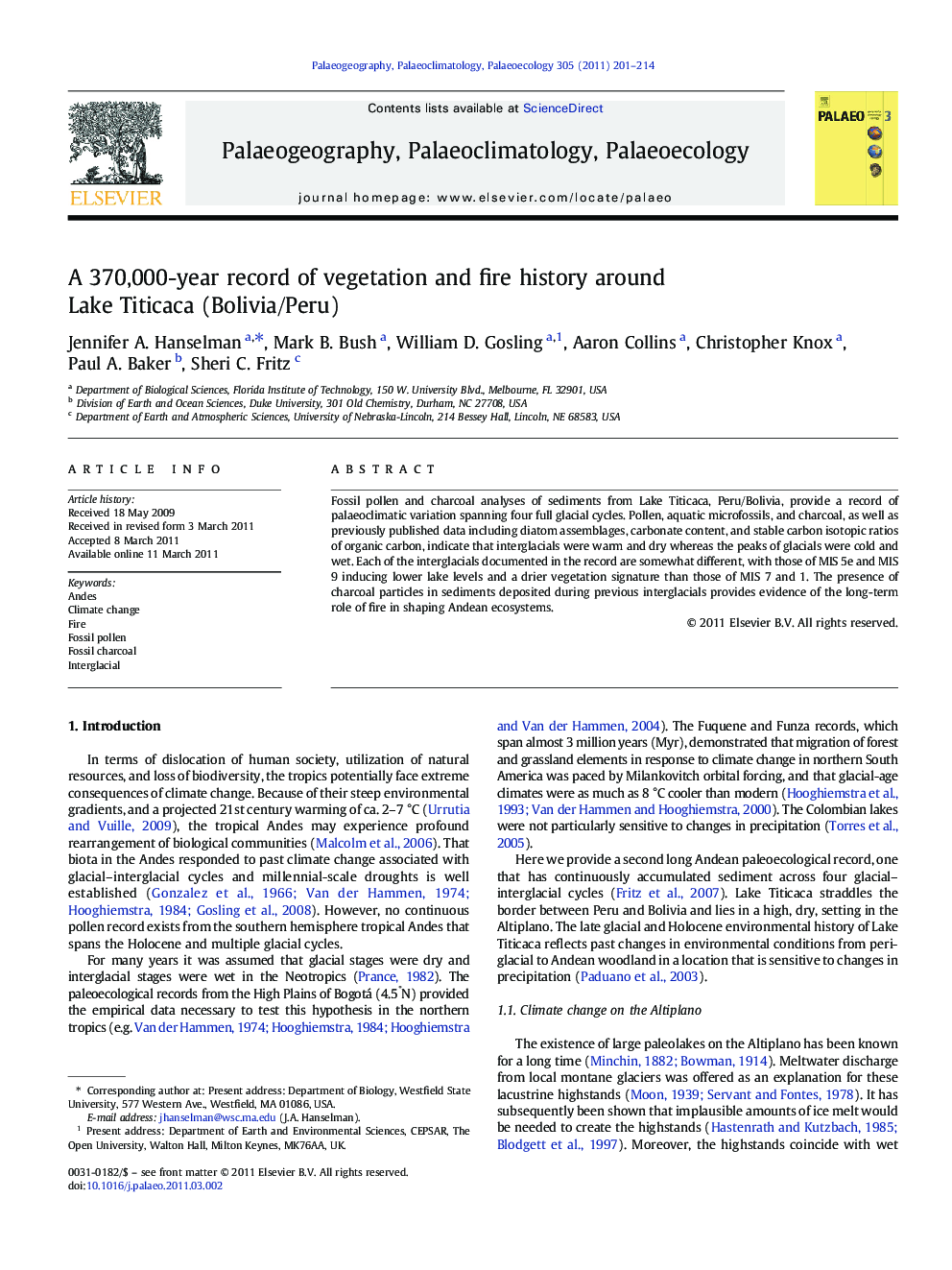| Article ID | Journal | Published Year | Pages | File Type |
|---|---|---|---|---|
| 4467367 | Palaeogeography, Palaeoclimatology, Palaeoecology | 2011 | 14 Pages |
Fossil pollen and charcoal analyses of sediments from Lake Titicaca, Peru/Bolivia, provide a record of palaeoclimatic variation spanning four full glacial cycles. Pollen, aquatic microfossils, and charcoal, as well as previously published data including diatom assemblages, carbonate content, and stable carbon isotopic ratios of organic carbon, indicate that interglacials were warm and dry whereas the peaks of glacials were cold and wet. Each of the interglacials documented in the record are somewhat different, with those of MIS 5e and MIS 9 inducing lower lake levels and a drier vegetation signature than those of MIS 7 and 1. The presence of charcoal particles in sediments deposited during previous interglacials provides evidence of the long-term role of fire in shaping Andean ecosystems.
►Fossil pollen and charcoal provided a 370 kyr record of climate change. ►Fossil pollen and spores characterized the dynamics of each interglacial. ►MIS 5 and 9 documented a drier vegetation signature than MIS 7 and 1. ►Charcoal revealed the role of fire along the Andean landscape.
